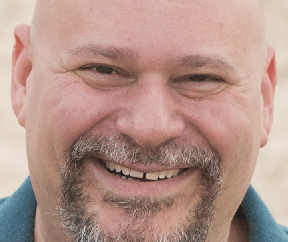Irish playwright George Shaw once remarked that “the single biggest problem in communication is the illusion that it has taken place.” This is a core concept for professional healthcare communicators like myself, but it was not until I experienced this idea in action that I truly understood what he meant.
Early in my career I was introduced to the concept of personal health literacy, although it would be some time yet before that term was used to describe the idea. Healthy People 2030 defines the concept as “the degree to which individuals have the ability to find, understand, and use information and services to inform health-related decisions and actions for themselves and others.”
I had already been working in health literacy a few years when I received a bill for a recent visit to my primary care physician. I had been charged a copay for the visit, which surprised me as this was my first appointment of the year. Wasn’t an annual well visit covered at 100 percent?
“You are being charged because you had an office visit,” I was told when I called.
“I know I visited the office,” I answered. “I’m not disputing that. But isn’t this supposed to be fully covered by insurance?”
“No. It was an office visit so you have a copay,” the representative provided as if that should clear things up. I wondered: Are not all in-person appointments with your doctor at their place of practice office visits? The answer, it turned out, was no.
It was only after I did my own research that I discovered the problem was one of lingo. Current Procedural Terminology (CPT) codes are a series of numerical billing codes used to identify medical services and procedures. In medical billing, an Office Visit and a Wellness Visit are two distinct concepts with their own CPT codes.
The former is used for appointments about specific health problems while the latter describes a broader review of a patient’s general wellness. Ongoing treatment of any chronic condition such as high cholesterol or high blood pressure, even if the appointment is your first of a new year, can be considered an Office Visit instead of a Well Visit. This was new information to me as growing up I believed there were only two types of doctor visits–sick or well visits.
After reading about the differences, I understood why I had been charged, but I was startled to learn that despite my working in the health literacy field I was still susceptible to moments of limited health literacy. This is one of the most challenging concepts to understand about health literacy, that it is dynamic–a fluctuating state that is influenced by a multitude of factors. True, we all have our personal baselines, but there can be peaks and valleys in our understanding within those baselines. Context matters.
The onus of understanding, however, should not fall solely on the patient’s shoulders. Communication is a two-way street, and healthcare systems and organizations bear equal responsibility when it comes to ensuring clear communication. Healthy People 2030 describes the skillset of healthcare organizations to effectively communicate with patients as organizational health literacy. It defines this type of health literacy as “the degree to which organizations equitably enable individuals to find, understand, and use information and services to inform health-related decisions and actions for themselves and others.”
In this instance, it was not merely my personal health literacy issues that were obscuring my understanding (that is, my not knowing the differences between how my doctor’s office used the terms office and wellness visits), but the billing office’s organizational health literacy as well (that is, their inability to deviate from the terms they routinely use to explain the situation plainly and clearly using accessible language that would aid in my understanding).
Assuming that others understand what may be fundamentally obvious to you discounts the fact that many of us have diverse backgrounds and we may simply lack the context to speak the same language. All of us who communicate with patients in any capacity have the responsibility to recognize that the Curse of Knowledge is constantly lurking and waiting to ensnare us. We must remember to always meet patients where they are.
William Stone is Director of Content Strategy for Sommer Consulting, a primary market research firm located in suburban Philadelphia, with a heavy focus on health literacy, linguistics, and how people make decisions. He is an Intellus Worldwide Clear Health Communication Task Force member and a member of the International Health Literacy Association’s Executive Board (IHLA). He also chairs both IHLA’s Health Literacy in Market Research Interest Group and their Practice Standards Committee. Connect with him on LinkedIn.
Not a member of the Society? Please consider joining here: https://participatorymedicine.org/memberships/







This: “ The onus of understanding, however, should not fall solely on the patient’s shoulders”
Thank you for speaking about health literacy and in healthcare, health literacy covers such a vast array of terminology and acronyms. In every specialty. If each individual healthcare person went to school for certification for their specific position, how in the world can a patient, when feeling their worst, be able to know information that isn’t used in their daily life as it is in one’s personal health career?
What a great example of how easy it is to get confused in the world of healthcare, even for someone immersed in health literacy.
Imagine how challenging “their inability to deviate from the terms they routinely use to explain the situation plainly and clearly using accessible language” would be for someone with low health literacy. I have seen this shared inability throughout my career in biopharma – experts who cannot speak without jargon that sets them apart from their patients, customers, society.
We have seen through the pandemic that some racial, ethnic, and cultural groups seem to have a lower level of health literacy.
But maybe the real problem is that “healthcare” has poor racial, ethnic, and cultural literacy.